Castleman's Corkscrew - the Southampton and Dorchester Railway
(Castleman's Corkscrew can be explored during this fairly short, 3¼ mile walk from Burley).
(1) A brief history
Castleman's Corkscrew was the first railway line to pass through the New Forest. It opened for business on 1st June, 1847, following the earlier, 1840, opening of the line between London and Southampton. Castleman's Corkscrew, effectively, extended that line, through Brockenhurst and on to Dorchester.
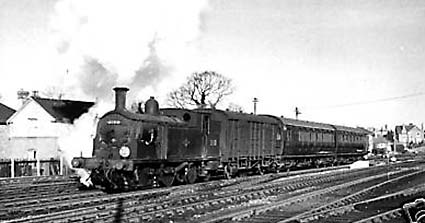
A circuitous route was used for the extension, taking in Redbridge, Lyndhurst Road (Ashurst), Beaulieu (Beaulieu Road), Brockenhurst, Christchurch Road (Holmsley), Ringwood, Leonard's Bridge, Wimborne, Poole Junction (Hamworthy Junction), Wareham, Wool and Moreton, but missing out Bournemouth, which then was little more than a fishing village, and Christchurch, too.
The line had been promoted by Charles Castleman, a Wimborne solicitor, and the winding route quickly became known as Castleman's Corkscrew.
The current main line linking Brockenhurst to Christchurch and Bournemouth, via Sway and Hinton Admiral, opened in 1888 and, to a large extent, spelt the beginning of the end for the middle section of the earlier line - that from Lymington Junction, a little south of Brockenhurst, to Hamworthy Junction, near Poole. This closed to all traffic in early May, 1964 and it wasn't long after that, that the tracks were lifted and much of the infrastructure removed.
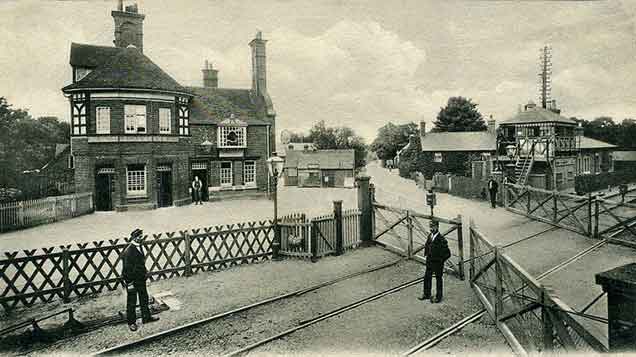
Morant Arms as they were in 1906
The end sections of the original line - from Southampton to Lymington Junction, and from Hamworthy Junction to Dorchester - remain operational and form part of the important Weymouth to London main line.
(2) The disused New Forest section of the track-bed
In the context of the New Forest, the disused section of track-bed from Lymington Junction on to the eastern New Forest boundary near Bagnum, arguably offers the most present day interest, for much of the way along here is open to walkers, cyclists, horse riders, wildlife enthusiasts and others who simply want to enjoy the experience of 'being in the Forest'.
This section leaves the current main line at Lymington Junction - where the Lymington branch line also separates from the main line - and from there passes over 'Cater's Crossing' before cutting through Blackhamsley Hill, which once was known as Blackhamsley Hummock - it was, though, shown by Richardson, King and Driver in the late-18th century as Blackhamsley Hammock, which was probably a misspelling.
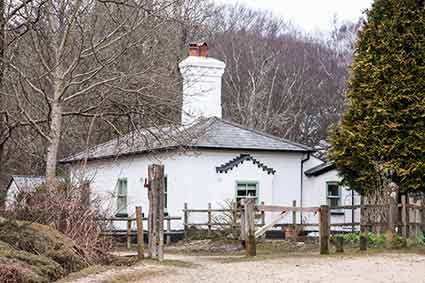
The old railway then skirts Hincheslea Bog and passes through the northern part of Set Thorns Inclosure, which must have caused much consternation at the planning stage as the Office of Woods, forerunners of the Forestry Commission, were usually very nervous about authorising passage of the railway through woodlands for fear of fires breaking out.
However, the route through Set Thorns Inclosure - the inclosure pre-dates the coming of the railway by some thirty-six years - was presumably accepted as a better option than passage a little to the north, through the very wet ground of Hincheslea Bog and on through Wilverley Inclosure, which also pre-dates the railway.
Open land near Hag Hill was then passed over and the southern edge of Wilverley Inclosure skirted before the railway crossed the Southampton - Christchurch turnpike road (now the A35) at Holmsley, called in at the station, looped around the edge of Goatspen Plain and marched on to Burbush Hill, a little to the south-west of Burley.
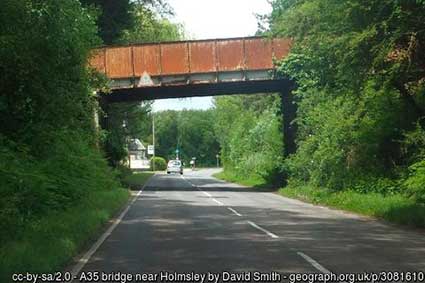
The railway continued over the Bransgore to Burley road, which in those far off days would have been little more than a dirt track, and passed between Cranes Moor and Dur Hill Down before leaving the New Forest close to Bagnum, en-route for Ringwood and beyond.
The old track-bed from close to Lymington Junction until the Burbush car park is particularly accessible, and is part of the New Forest cycle network, although for a relatively short distance, close to the A35 alongside Wilverley Inclosure, the track-bed was taken for a new road - also now part of the cycle network - allowing a notorious accident black-spot, the crossroads at Wilverley Post, to be closed.
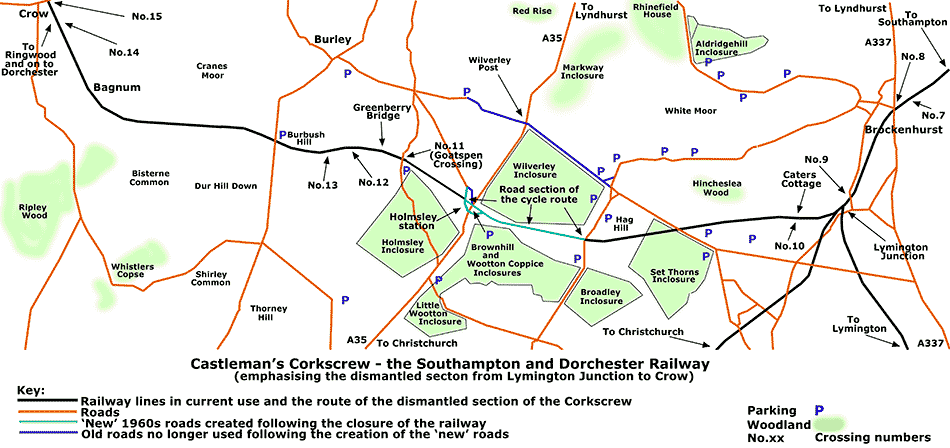
(3) Holmsley station - a reminder of yesteryear
Almost inevitably, the parts of Castleman's Corkscrew still in regular use as railways boast 19th century stations and other buildings, platforms, bridges over and under the track, crossings, crossing keeper's dwellings and much else.
But perhaps surprisingly, the same is true of the disused section of the line, particularly between Lymington Junction and Bagnum, providing much of interest for the railway enthusiast and casual observer alike.
For example, Holmsley station's main building has a continuing lease of life as an ever-popular tea room.
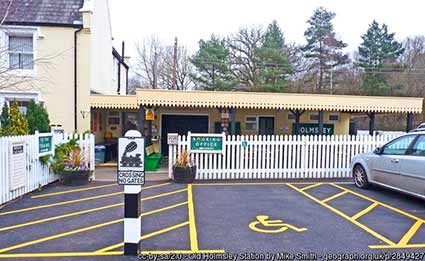
And my goodness, this station has a long and fascinating history. Originally called Christchurch Road, and also known as Ossemley (or Osmondly) Ford, the station was located close to the Southampton - Christchurch turnpike road so as to serve the then moderately sized town of Christchurch a little over seven miles away - an 'express' horse drawn coach provided regular connections.
The station originally had a staff of seven and was renamed Holmsley in 1890 when Christchurch got its own station. It was quite an impressive, although modest-sized, complex with a goods yard and crane for loading and unloading freight, a signal box, lamp room, station master's house and railway staff cottages.
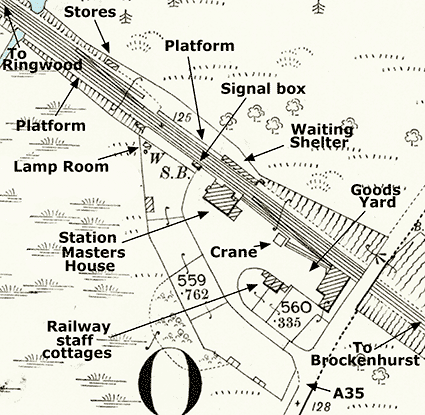
Passenger traffic dwindled after the opening of the direct line from Brockenhurst to Christchurch although freight traffic, primarily wood from nearby New Forest inclosures, remained of importance for many years. Construction and operation of the nearby Second World War, Holmsley airfield also generated considerable passenger and freight traffic.
Illustrious visitors who alighted from the trains at Holmsley included Prince Edward, Queen Victoria's eldest son, and his mistress, Lillie Langtry, en-route to their seaside residence at Bournemouth. Kaiser Wilhelm of Germany and his cabinet also probably travelled by train to Holmsley when visiting Highcliffe Castle in 1907, and General Eisenhower, too, in May 1944 used the station when he visited Holmsley airfield to supervise preparations for the D-Day landings.
The station was also featured as the fictional Browndean by the Victorian writer Robert Louis Stevenson in his 1889 novel, 'The Wrong Box'.
(4) Crossing the track
Bridges
Bridges continue to prominently feature along the old route, some at crossing points of roads and Forest tracks, others carrying the track-bed over streams and drainage channels.
Some are in a reasonable state of repair, although others have not survived so well. Greenberry Bridge, for example, has completely lost its central arch and the remaining brickwork is crumbling, to put it kindly, whilst on the edge of Burbush car park, inconspicuous brickwork remains shrouded in vegetation are the only evidence of a short-lived bridge demolished in around 1859 to make way for double track operation.
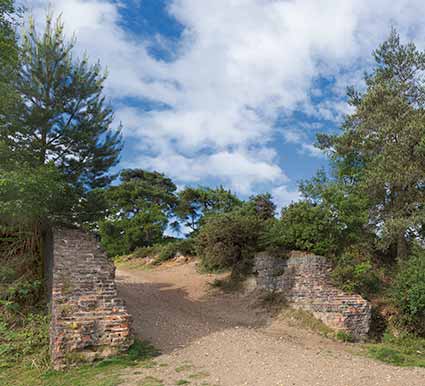
Maintenance and / or replacement work continues on some. A bridge at Blackhamsley Hill, for example, in late-2019 is closed for repairs (diversions are in place); another near Hincheslea Bog is known to be in need of repairs, but these in late-2019 have not started; and a rusting bridge at Holmsley carrying the A35 over the 'new' 1960s minor road below is scheduled to be replaced, starting in 2020.
Gated crossings
Gated, numbered crossings were also provided, primarily to take minor roads and tracks across the line. Most had an adjacent crossing keeper's lodge that was originally relatively primitive and very small - a single storey building with two living rooms, a conventional hipped roof and a lean-to scullery at the rear, but sited on a reasonably generously sized plot of land.
Some of the crossing keeper's lodges, now much modernised and updated, are still in use today as private residences. Lodge number 10 - see the map above for the location of the crossings - is one such. Located close to Cater's Cottage, which is shown on maps both old and new, this crossing was informally known from the early days as Cater's Crossing, whilst the lodge today is aptly known as Gatehouse Cottage. Here, at what is the first crossing on the closed section of the line, old, lichen-encrusted gate-posts still survive. Attendance was withdrawn on 7th January, 1964, four months before traffic ceased.
The crossing keeper's lodge at Goatspen Crossing, number 11, a little to the west of 'Cater's Crossing', was demolished in around 1993 and replaced by a new house - rails until relatively recently remained embedded in the road surface here, and in fact may still be there.
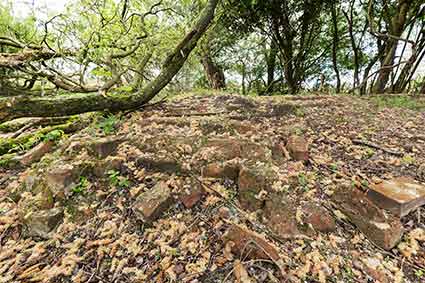
Other crossing keeper's lodges have long since been abandoned and demolished. Crossing gate-posts, however, remain beside the sites of lodge numbers 12 and 13, both originally located by crossing points of minor Forest tracks. Dwelling foundations can also be found amongst small copses that have developed on the sites, the remnants of kitchen gardens that still contain fruit-bearing trees presumably introduced by early crossing keepers to produce crops to supplement other home-grown and bought-in foodstuffs.
(The records show that in 1910 the presumably female - at this time, many of the crossing keepers were female - crossing keeper at number 12 was not paid, but occupied the lodge rent free; whilst at number 13, the keeper - presumably also female - was paid 2/6d per week and also lived rent free. Why the difference is open to conjecture).
(5) Wildlife along the way
Following closure, New Forest wildlife was inevitably quick to colonise and, to a large extent, was probably present anyway. Nightingales, for example, not too many years ago, bred in dense scrub along the early part of the route, whilst along other accessible New Forest sections, habitat diversity is huge and so, consequently, is the potential for seeing wildlife.
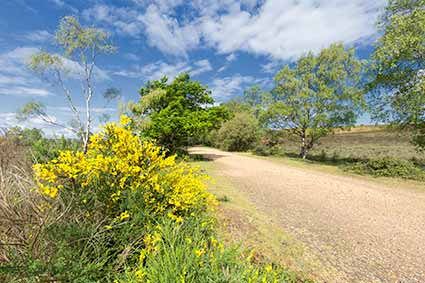
Trackside trees - mature birch, willow and oak, for example - form attractive straggles of linear woodland, whilst gorse and broom add splashes of spring-time yellow blossom. Hawthorns provide their own beautiful white blossom, rich in nectar and pollen much loved by a variety of insects, and an autumnal berry harvest for birds, such as redwings and fieldfares, and small mammals. Honeysuckle and brambles, too, provide blossom for nectaring butterflies and other insects, and late summer and autumn fruit and berries for wildlife.
Heathland in places abuts the route of the Corkscrew, home to a range of nationally scarce species such as Dartford warblers, silver-studded blue butterflies, and nightjars that in the gloom hunt over the old track-bed.
Wetlands, mires, bogs, small streams and drainage channels are also passed along the way - think spring and summer wading birds such as curlew and snipe, bewildering varieties of dragonflies and damselflies, and a wide range of wild flowers.
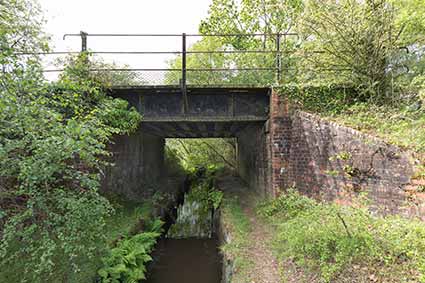
Mammals, too, are also well-represented. Most frequently seen at dawn and dusk, fallow deer feed on line-side grasses and overhanging tree branches, whilst much smaller roe deer take whatever is within their reach. Foxes wander along this linear corridor, bats hawk for insects along the track-bed corridor, rabbits burrow into the embankments, and small mammals - mice, voles and shrews - find much to their liking, in turn providing a regular supply of food for tawny owls and kestrels.
And reptiles - adders, slow worms and common lizards, in particular - favour the south-facing embankments as places ideal for basking in early morning sunshine as they warm up ready to face the day ahead.
References:
Castleman's Corkscrew - The Southampton and Dorchester Railway, 1844-1848: J.G. Cox
Memories of Holmsley Station and the Brockenhurst to Ringwood Railway: Phil Grant
A Brief History of the Old Station Tea Rooms, Holmsley: Phil Grant
Many and Great Inconveniences - the level crossings and gatekeepers' cottages of the Southampton and Dorchester railway: Phillip A. Brown
Quick links
More links
Search this site

